Understanding how the brain changes its mind: microstimulation in the macaque frontal eye field reveals how saccade plans are changed
- PMID: 22457494
- PMCID: PMC6622050
- DOI: 10.1523/JNEUROSCI.3668-11.2012
Understanding how the brain changes its mind: microstimulation in the macaque frontal eye field reveals how saccade plans are changed
Abstract
Accumulator models that integrate incoming sensory information into motor plans provide a robust framework to understand decision making. However, their applicability to situations that demand a change of plan raises an interesting problem for the brain. This is because interruption of the current motor plan must occur by a competing motor plan, which is necessarily weaker in strength. To understand how changes of mind get expressed in behavior, we used a version of the double-step task called the redirect task, in which monkeys were trained to modify a saccade plan. We microstimulated the frontal eye fields during redirect behavior and systematically measured the deviation of the evoked saccade from the response field to causally track the changing saccade plan. Further, to identify the underlying mechanisms, eight different computational models of redirect behavior were assessed. It was observed that the model that included an independent, spatially specific inhibitory process, in addition to the two accumulators representing the preparatory processes of initial and final motor plans, best predicted the performance and the pattern of saccade deviation profile in the task. Such an inhibitory process suppressed the preparation of the initial motor plan, allowing the final motor plan to proceed unhindered. Thus, changes of mind are consistent with the notion of a spatially specific, inhibitory process that inhibits the current inappropriate plan, allowing expression of the new plan.
Figures
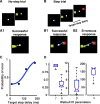

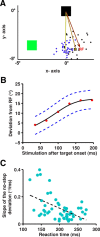

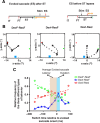
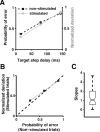
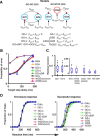

Comment in
-
Neurally constrained cognitive modeling clarifies how action plans are changed.J Neurosci. 2012 Aug 1;32(31):10449-50. doi: 10.1523/JNEUROSCI.2544-12.2012. J Neurosci. 2012. PMID: 22855793 Free PMC article. No abstract available.
References
-
- Aron AR, Verbruggen F. Stop the presses: dissociating a selective from a global mechanism for stopping. Psychol Sci. 2008;19:1146–1153. - PubMed
-
- Aslin RN, Shea SL. The amplitude and angle of saccades to double-step target displacements. Vision Res. 1987;27:1925–1942. - PubMed
-
- Becker W, Jürgens R. An analysis of the saccadic system by means of double step stimuli. Vision Res. 1979;19:967–983. - PubMed
-
- Boucher L, Palmeri TJ, Logan GD, Schall JD. Inhibitory control in mind and brain: an interactive race model of countermanding saccades. Psychol Rev. 2007;114:376–397. - PubMed
Publication types
MeSH terms
LinkOut - more resources
Full Text Sources
